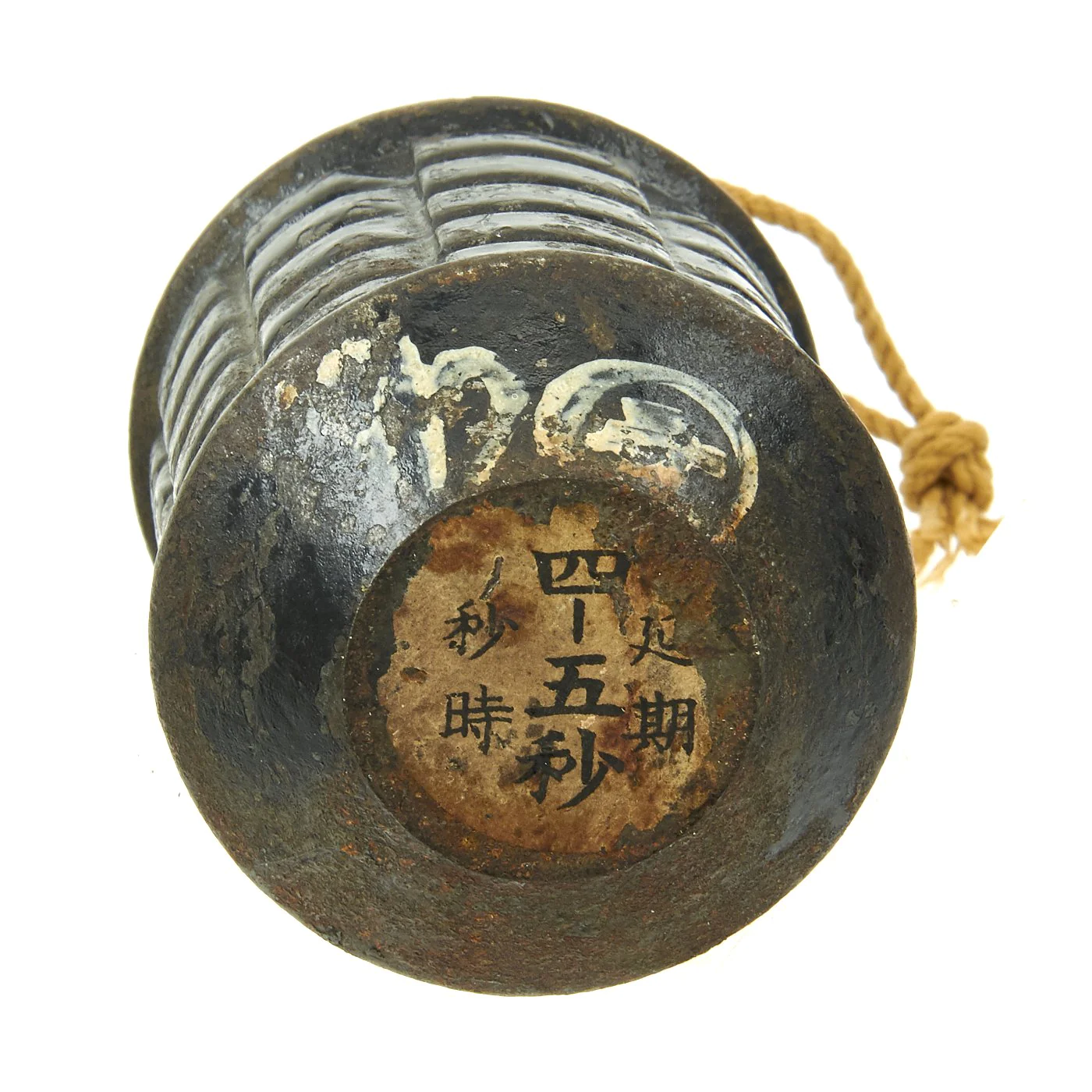The Type 97 Fragmentation Grenade
- Patrick Phillips
- Apr 18, 2023
- 4 min read

The Japanese Type 97 fragmentation hand grenade was the most prolific grenade of the Japanese military during the second world war. The Type 97 is ubiquitous, being featured in almost any war film about combat in the Pacific, from Letters from Iwo Jima to Hacksaw Ridge. Its construction and use are simple and effective, a characteristic common to Japanese equipment of the Second World War.

Developed in 1937, the Type 97 grenade was an improvement over the earlier Type 91 hand grenade. The type 91 had a longer fuse train of approximately 7-8 seconds, much too long for grenade use. The user would risk seeing his grenade being tossed back into his position by an enemy due to the long fuse time. The type 91 also featured a threaded base, where a propelling charge could be threaded in place and the grenade could be fired from the Type 10 and later Type 89 grenade discharger, better known as the Type 89 “Knee Mortar”. There were also special fin attachments that could be threaded into the grenade for use as a rifle grenade. A Japanese study concluded that the Type 91 was almost always thrown by hand and that the threaded base was somewhat superlative, and not worth the expense and added production costs. When the type 97 was introduced, the threaded base was eliminated and the fuse train was shortened to 4-5 seconds, mitigating the risk of having it thrown back at you. The Type 97’s fuses were known to be erratic in their timing, so the grenade was to be thrown immediately.

The grenade body is made of cast iron with an outer serrated pattern, similar to the US MK 2 “Pineapple” hand grenade. This pattern is meant to provide the fragmentation effect on detonation. The grenade body holds 65 grams of TNT explosive. The top of the grenade body is threaded to accept a cast iron cap that holds the fuse. The body is painted black, and the cap is generally painted red, to denote its explosive effect. The base of the grenade would have been marked with its filling date and year in white paint, and a paper label.
The fuse train is multi-part construction and is mostly brass. The upper fuse assembly contains the striker housing, primer, creep spring, striker, firing pin, protective cap, and safety pin with pull cord. The lower portion of the striker assembly has a small relief hole below the primer. This serves to vent gases created by the ignition of the primer and is sealed by foil for waterproofing. The lower fuse assembly screws into the bottom of the striker assembly and contains the time delay train and booster. A copper sleeve slips over the lower fuse and houses the detonator, and either a felt or paper packing wad. When assembled, the complete grenade weighed approximately one pound. The upper striker housing is stamped with production dates and the manufacturer's stamp. The lower fuse is stamped with “4 – 5 seconds” in Japanese characters, denoting the length of time delay.
In transit, the grenades would be packed in crates with fuses installed, but the threaded firing pin would be unscrewed to prevent accidents. Once issued, the firing pin would be screwed down to arm the grenade. Conveniently, this could be done through a hole in the top of the protective cap, which allowed the grenade to be armed without the need for disassembly, or removal of the safety pin.



To use the grenade, the safety pin was removed, and the cap was struck firmly on a hard surface. Japanese doctrine was to hold the grenade in your hand with the fuse down (by your pinky finger) and strike the fuse on your helmet to activate the fuse. This arming technique seems like it could be somewhat awkward and unnecessary. Based on my personal study of grenades in my own collection, holding the grenade with the fuse up and firmly slapping it with the palm of your hand would be sufficient to activate the grenade, and probably faster. But after considering why the Japanese might have trained their soldiers to arm their grenades in this way, it occurred to me that it might actually be easier to activate the Type 97 using this technique where using two hands may be difficult or awkward, such as in the prone position, or when in a confined space such as a foxhole or trench. However, this is purely my own speculation.

In general, the type 97 lacked explosive power due to its smaller size, and its fuse could be unreliable and erratic in timing. Arming the grenade also came with its own set of challenges. It relied on sufficient downward force such as the palm of your hand or smacking it on your helmet, instead of having a more reliable, spring-loaded internal striker like the US MK 2 grenade or the British Mills bomb. Like many other Japanese weapons of the Second World War, the type 97’s effectiveness should be judged by the entirety of its context and how it was employed on the battlefield. The grenade had its drawbacks, especially when compared to its counterparts used by other nations, but when employed in the millions, easily transported, and lighter weight, the Type 97 grenade was potent and used to devastating effect against allied forces.





Comments